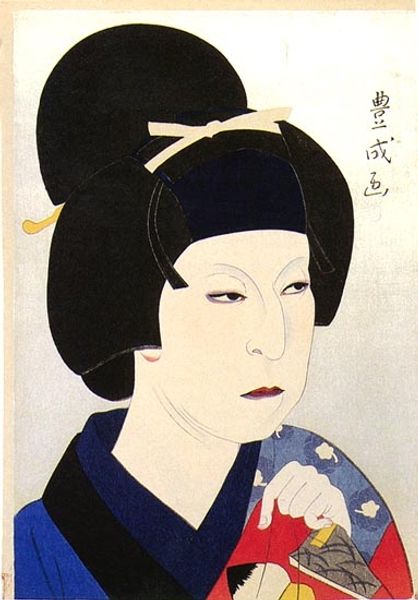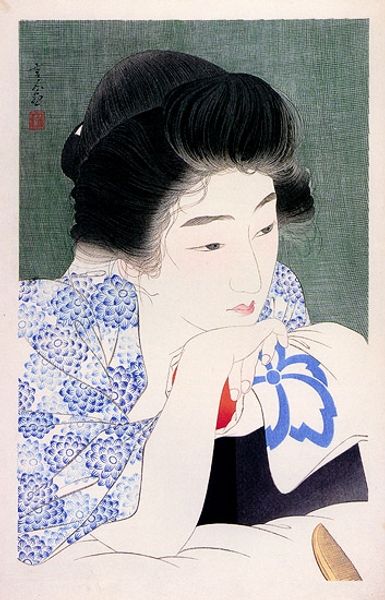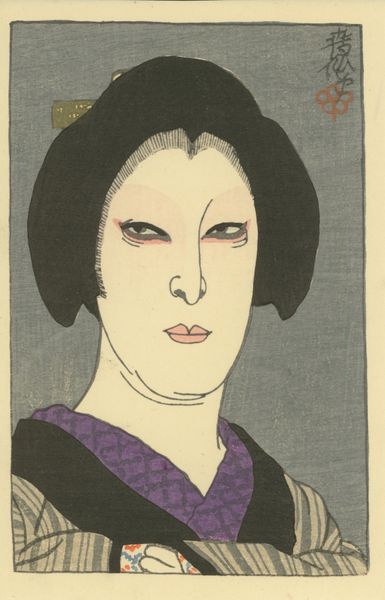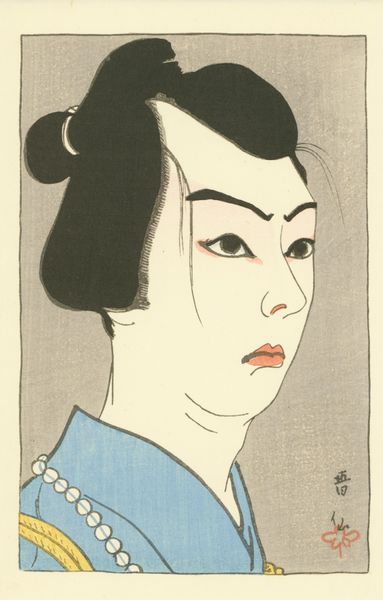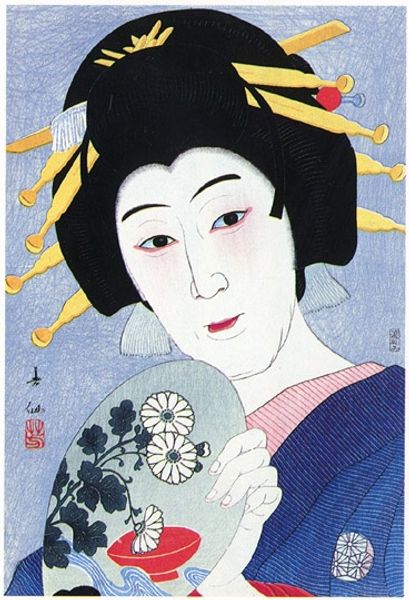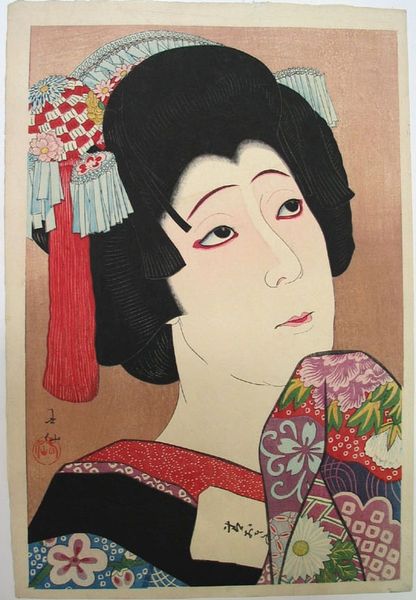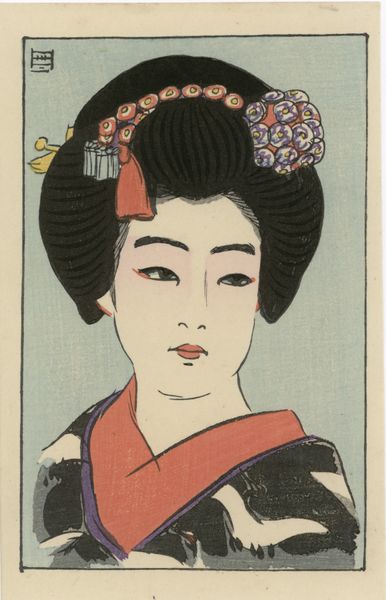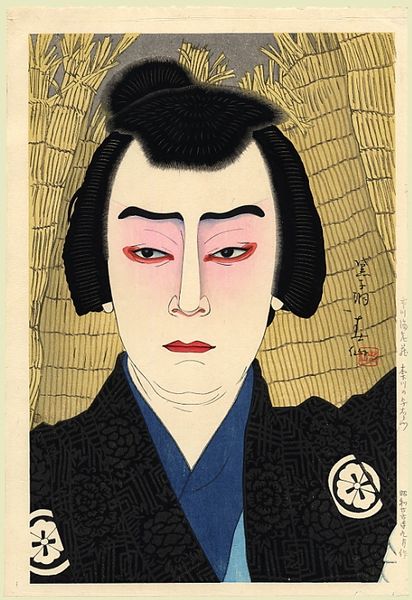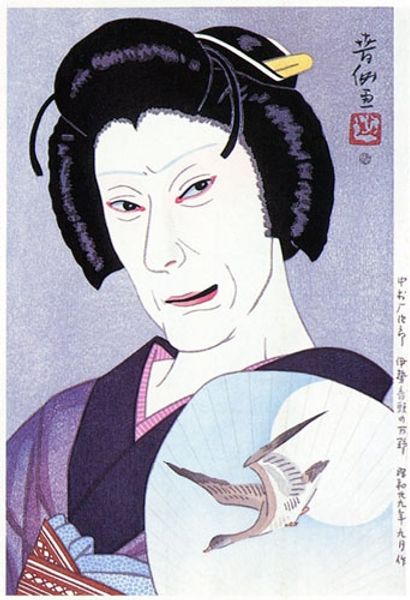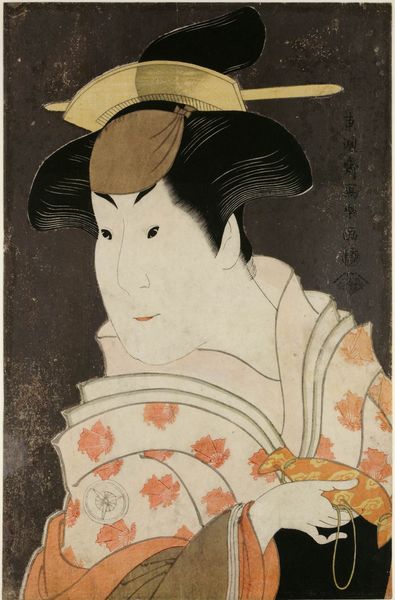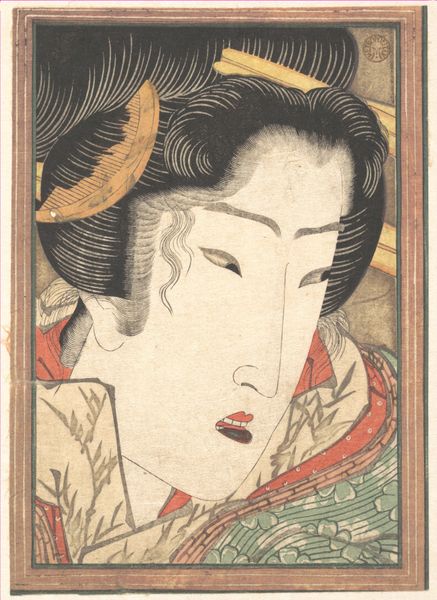
Copyright: Public domain Japan
Curator: I find this woodblock print rather striking. It's entitled "Nakamura Tokizo as Taruya Osen," created in 1953 by Natori Shunsen. What is your initial reaction to it? Editor: A deep melancholic calm washes over me. The downcast eyes, the pursed lips… the entire composition suggests a world-weariness beyond words. Curator: Absolutely. We see it, particularly, in the way Shunsen depicts Tokizo, who, interestingly, isn’t just *any* subject, but embodies a character, layering identity, performance, and representation. Shunsen was renowned for his actor portraits within the ukiyo-e tradition, but this is more than just a record. It hints at the complicated life of an entertainer navigating the social mores of post-war Japan. Editor: And Shunsen expertly communicates this internal complexity through the symbolic use of color and line. The elaborate kimono, for example – a dazzling display of interwoven patterns, floral motifs and geometry – could represent layers of tradition, obligation and confinement. But consider, too, how the red highlights around the eyes may evoke ritual performance. Curator: The makeup and the slightly idealized features position Tokizo within the onnagata tradition – male actors who portray female roles – opening up possibilities for considering queer performance and the destabilization of gender norms within Japanese theatre. This portrait serves as a key historical document to that vibrant performance tradition. Editor: You are right, absolutely right! But at the same time, the drooping shoulder and faint crease above the brow convey a fragility that surpasses gender roles. Curator: That subtle subversion of expectations in the face of imposed social identities is something Shunsen seems to amplify here. There’s an invitation, I think, for the viewer to question what it truly means to ‘perform’ identity and whether liberation might be possible. Editor: This examination also applies to viewers: we have been in some way conditioned by symbols and artistic codes. In this portrait of Taruya Osen, we may very well be staring at our past and potential future in society! Curator: Absolutely! Viewing artwork like this allows us to view art and history in a non-linear fashion, so to speak. Thanks for helping shed light on the rich subtexts that lie beneath this woodblock print. Editor: And thank you for inviting this cross-pollination of ideas. A rewarding encounter with ukiyo-e!
Comments
No comments
Be the first to comment and join the conversation on the ultimate creative platform.
